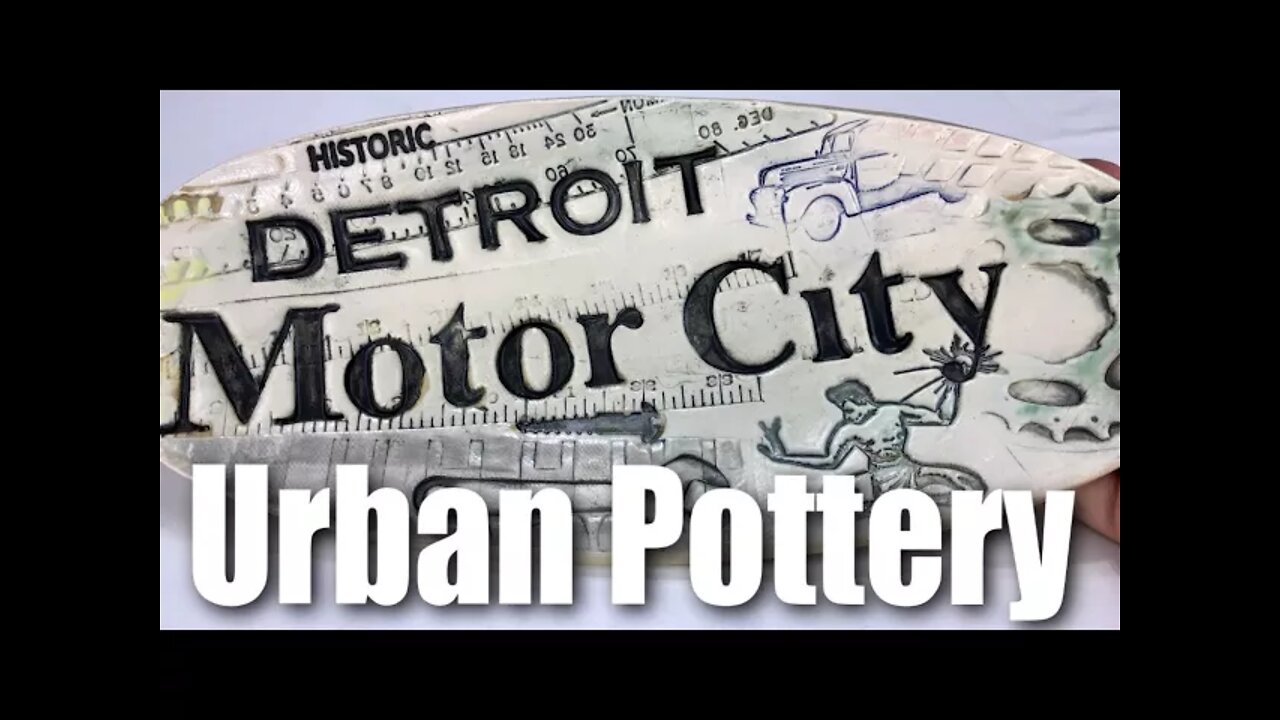Premium Only Content

Detroit Ceramic Dish Pottery Art Review
Get it here... https://www.etsy.com/shop/MergingStory
Get Detroit merchandise here... http://geni.us/2HQfz
Join this channel to help me bring you more vids...
https://www.youtube.com/channel/UCS-ix9RRO7OJdspbgaGOFiA/join
Join the free von Panda group here... https://panda-research-institute.mn.co
Get Peter von Panda gear here... https://petervonpanda.storenvy.com/
Instagram... https://www.instagram.com/petervonpanda/
As an Amazon Associate I earn from qualifying purchases.
Merging Story Pottery - Urban Art for Cool People
Life is a Merging Story. Such is our pottery. Two artists, numerous styles and a multitude of experiences that challenge each other to find a way to blend and interact. These stories are always being rewritten through clay and mixed media. They unfold and express varying combinations of what we know and what remains hidden, of our hopes and fears and our struggle and victories. Many of our stories simply revolve around the places we've grown up knowing, Michigan and Detroit. Others whisper the illusion of truths each of us holds within.
If you listen closely, you may find one of our stories merging with your own
Ceramic vases, tiles, ornaments and more. Unique pottery with a story. We realize our store has limited items, so if you have seen an item of ours at a show or store, please convo us and we will place a listing for you if possible
Decorate any room with this dish designed with gears, blueprint patterns, bricks and the Spirit of Detroit. A sepia tone of off white over brown, is highlighted with blues and greens, giving the imprints a nice pop. The word "Detroit" is glazed in a dark blackish brown. Unlike many of our dishes, this one does not have feet (see images). Perfect for keys or small items. Our glazes are food safe.
The dish is approximately 11.5 by 5 inches and at its highest point about 1.5 inches.
Price includes shipping. If you are outside North America, contact us on additional shipping charges
Detroit (/dɪˈtrɔɪt/, locally also /ˈdiːtrɔɪt/; French: Détroit, lit. 'strait')[7] is the largest and most populous city in the U.S. state of Michigan, the largest U.S. city on the United States–Canada border, and the seat of Wayne County. The municipality of Detroit had a 2018 estimated population of 672,662, making it the 23rd-most populous city in the United States. The metropolitan area, known as Metro Detroit, is home to 4.3 million people, making it the second-largest in the Midwest after the Chicago metropolitan area. Regarded as a major cultural center, Detroit is known for its contributions to music and as a repository for art, architecture and design.[8]
Detroit is a major port on the Detroit River, one of the four major straits that connect the Great Lakes system to the Saint Lawrence Seaway. The Detroit Metropolitan Airport is among the most important hubs in the United States. The City of Detroit anchors the second-largest regional economy in the Midwest, behind Chicago and ahead of Minneapolis–Saint Paul, and the 13th-largest in the United States.[9] Detroit and its neighboring Canadian city Windsor are connected through a highway tunnel, railway tunnel, and the Ambassador Bridge, which is the second busiest international crossing in North America, after San Diego–Tijuana.[10] Detroit is best known as the center of the U.S. automobile industry, and the "Big Three" auto manufacturers General Motors, Ford, and Fiat Chrysler are all headquartered in Metro Detroit.[11]
In 1701, Antoine de la Mothe Cadillac founded Fort Pontchartrain du Détroit, the future city of Detroit. During the 19th century, it became an important industrial hub at the center of the Great Lakes region. The city became the 4th-largest in the nation in 1920, after only New York City, Chicago and Philadelphia, with the influence of the booming auto industry.[12] With expansion of the auto industry in the early 20th century, the city and its suburbs experienced rapid growth, and by the 1940s, the city had become the fourth-largest in the country. However, due to industrial restructuring, the loss of jobs in the auto industry, and rapid suburbanization, Detroit lost considerable population from the late 20th century to the present. Since reaching a peak of 1.85 million at the 1950 census, Detroit's population has declined by more than 60 percent.[4] In 2013, Detroit became the largest U.S. city to file for bankruptcy, which it successfully exited in December 2014, when the city government regained control of Detroit's finances.[13]
-
 3:32
3:32
Peter von Panda
1 year agoFree Wendy's Frosties For A Year?
1.01K -
 27:46
27:46
Rethinking the Dollar
1 hour agoUS Jobs Report DECEPTION – Precious Metals Smell Blood (Fed To Cut BIG) | Morning Check-In: Let's Talk...
822 -
 1:00:08
1:00:08
VINCE
3 hours agoBREAKING: Trump Goes To 'War' In Chicago | Episode 121 - 09/09/25
120K114 -
 LIVE
LIVE
LFA TV
5 hours agoLFA TV ALL DAY STREAM - TUESDAY 9/9/25
4,981 watching -
 1:34:42
1:34:42
Dear America
3 hours agoTrump DESTROYS Dems: ‘Blood On Their Hands!’ — America Won’t Survive Without Law & Order”
74.6K48 -
 DVR
DVR
Nerdrotic
4 hours ago $1.99 earnedUFO Disclosure Hearing LIVE REACTION - Forbidden Frontier #116
16K6 -
 29:06
29:06
Clownfish TV
3 hours agoRIP YouTube! It Hurt Itself in Its Confusion... | Clownfish TV
6.67K13 -
 LIVE
LIVE
The Big Mig™
3 hours agoGrand Jury Empaneled for Anthony Weiner Laptop
2,649 watching -
 2:04:14
2:04:14
Badlands Media
10 hours agoBadlands Daily: Sept. 9, 2025
37.6K4 -
 2:48:07
2:48:07
Matt Kohrs
8 hours agoCONGRESSIONAL UFO HEARING || Live Trading Futures
28.2K3